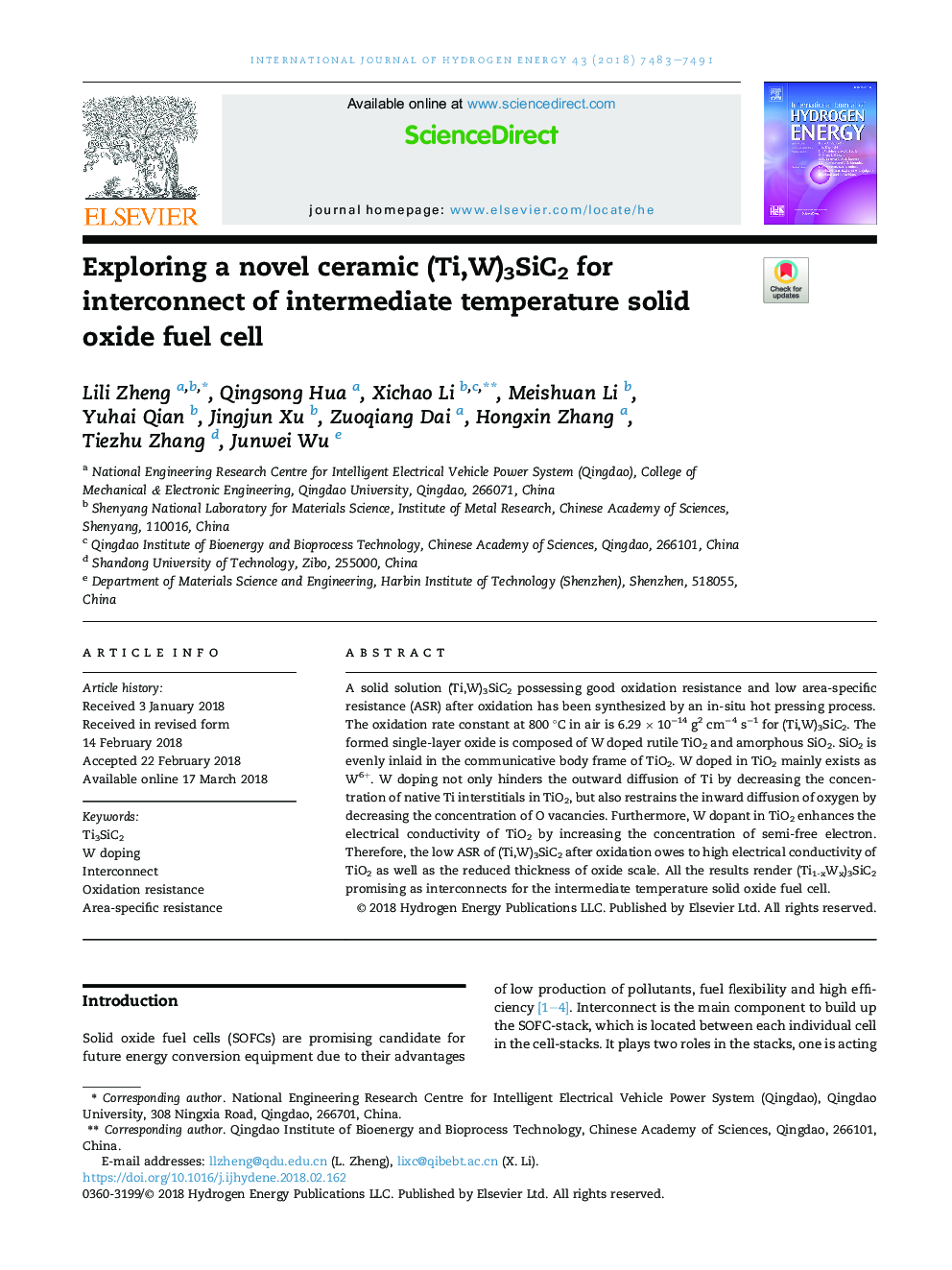| Article ID | Journal | Published Year | Pages | File Type |
|---|---|---|---|---|
| 7706594 | International Journal of Hydrogen Energy | 2018 | 9 Pages |
Abstract
A solid solution (Ti,W)3SiC2 possessing good oxidation resistance and low area-specific resistance (ASR) after oxidation has been synthesized by an in-situ hot pressing process. The oxidation rate constant at 800 °C in air is 6.29 Ã 10â14 g2 cmâ4 sâ1 for (Ti,W)3SiC2. The formed single-layer oxide is composed of W doped rutile TiO2 and amorphous SiO2. SiO2 is evenly inlaid in the communicative body frame of TiO2. W doped in TiO2 mainly exists as W6+. W doping not only hinders the outward diffusion of Ti by decreasing the concentration of native Ti interstitials in TiO2, but also restrains the inward diffusion of oxygen by decreasing the concentration of O vacancies. Furthermore, W dopant in TiO2 enhances the electrical conductivity of TiO2 by increasing the concentration of semi-free electron. Therefore, the low ASR of (Ti,W)3SiC2 after oxidation owes to high electrical conductivity of TiO2 as well as the reduced thickness of oxide scale. All the results render (Ti1-xWx)3SiC2 promising as interconnects for the intermediate temperature solid oxide fuel cell.
Related Topics
Physical Sciences and Engineering
Chemistry
Electrochemistry
Authors
Lili Zheng, Qingsong Hua, Xichao Li, Meishuan Li, Yuhai Qian, Jingjun Xu, Zuoqiang Dai, Hongxin Zhang, Tiezhu Zhang, Junwei Wu,
